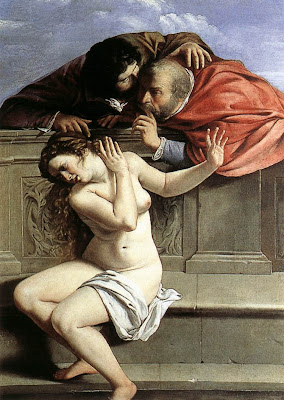The Capitoline Wolf (Lupa Capitolina), a larger than life-size bronze sculpture standing 75 cm tall and 114 cm, long is located in the Museo Nuovo in the Palazzo dei Conservatori on the Campidoglio (the ancient Capitoline Hill) in Rome, Italy. The statue's theme is linked to the founding of Rome, when the twins Romulus and Remus saw their father Numitor dethroned by his brother Amulius, who ordered the twins be thrown into the Tiber. But the twin brothers were rescued by a she-wolf that suckled them and took care of them until a herdsman, Faustulus, found them raised them further. The brothers, with the support of their followers decided to found a new city, but in a dispute about the site of the city Romulus killed Remus and built Rome, which was named after his name.
The Capitoline Wolf statue was long thought to be an Etruscan work of the 5th century BCE, with the figures of the twins added in the late 15th century CE, probably by the sculptor Antonio Pollaiolo. However, radiocarbon and thermo-luminescence dating tests found that sculpture was possibly created in the 13th century CE.
The she-wolf from the legend of Romulus and Remus has been regarded as a symbol of Rome from the ancient times. Several ancient sources refer to statues depicting the wolf suckling the twins. Cicero mentions a statue of the she-wolf as one of several sacred objects on the Capitoline that was inauspiciously struck by lightning in 65 BCE, "It was a gilt statue on the Capitol of a baby being given suck from the udders of a wolf."
German art historian Johann Joachim Winckelmann of the 18th-century attributed the statue to an Etruscan sculptor of the 5th century BCE. But, Winckelmann also identified a Renaissance origin for the figures of Romulus and Remus, saying they were probably added in 1471 or later.
During the 19th century several researchers questioned Winckelmann's dating of the bronze sculpture. In 1854 August Emil Braun, Secretary of the Archaeological Institute of Rome, proposed that the damage to the wolf's paw had been caused by an error during casting of the statue, not due to lightning. Similarly, Conservator of the Louvre, Wilhelm Fröhner, stated in 1878 that the style of the statue was of the Carolingian period rather than Etruscan. In 1885 Wilhelm von Bode also opined that the she-wolf statue was most likely a medieval work.
In 2006 Italian art historian Anna Maria Carruba and Etruscologist Adriano La Regina contested the traditional origin of the she-wolf on the basis of the bronze casting technique. Carruba was restoring the sculpture in 1997, when she examined how it had been made. She observed that the statue had been cast as a single piece, using a ‘lost-wax casting’ technique that was not used in ancient times. Ancient Greek and Roman bronze statues were constructed from multiple pieces. Whereas, single piece casting technique was widely used in medieval times to mould bronze items. Carruba argued, like Braun, that the damage to the she-wolf's paw had resulted from an error in the moulding process. In addition, La Regina, the state superintendent of Rome's cultural heritage, argued that the sculpture's artistic style is more akin to Carolingian and Romanesque art than to the ancient times.
In February 2007, radiocarbon and thermo-luminescence dating tests was conducted at the University of Salento. Although in July 2008 La Regina announced that the results of the tests had produced a ‘very precise indication in the 13th century’, the question of the age of the statue was not solved. The results of the tests were not to be disclosed before the end of 2008, but as of April 2010, they have not been published by the Museo Nuovo.
The twelfth-century English cleric Magister Gregorius in his essay, De Mirabilibus Urbis Romae, recorded in an appendix three pieces of sculpture he had neglected, one being the wolf in the portico at the principal entrance to the Vatican Palace. But he mentioned no twins.
The present-day Capitoline Wolf could not have been the sculpture seen by Benedict and Gregorius, if its newly attributed age is accepted, though it could have been a replacement for an earlier, now lost, statue of the Roman wolf. In December 1471 Pope Sixtus IV ordered the present sculpture transferred to the Palazzo dei Conservatori on the Capitoline Hill, and the twins were possibly added then.
The Capitoline Wolf was a favorite of Benito Mussolini, who projected himself as the founder of the ‘New Rome’. To win American goodwill, he sent several copies of the Capitoline Wolf to U.S. cities. In 1929 he sent one replica to Cincinnati, Ohio, which was replaced in 1931by another replica of the statue, which still stands in Eden Park, Cincinnati. The same year another replica was given by Mussolini to the city of Rome, in Georgia, located in the foothills of the Appalachian Mountains, United States. A third replica was sent to New York City.
The Capitoline Wolf has a special place in the past and present history, as well as the culture of Rome. The image of the Capitoline Wolf was used on both the emblem and the poster for the 1960 Summer Olympics in Rome. Also, the Roman football club A.S. Roma uses the Capitoline Wolf in its emblem.





















